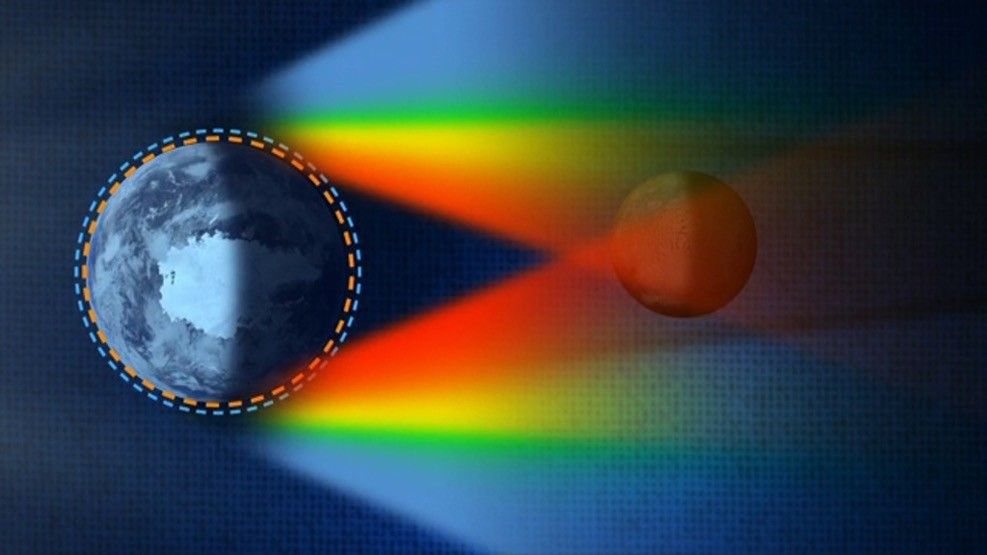What are the two types of Eclipses?
Solar and Lunar Eclipses
During this lunar phase, the entire face of the Moon is lit up. What is it called?
The Full Moon
What is the scientific name for the Northern Lights?
Aurora Borealis
What season do we get more hours of sunlight during the day?
Summer
Summer, Winter, Fall, and Spring are examples of what?
Seasons
What happens during a Solar Eclipse?
The Moon passes between the Sun and Earth, which causes the moon to cast a shadow on Earth.
During this lunar phase, the moon is entirely dark and cannot be seen from Earth. What is it called?
The New Moon
Do you usually see Auroras near the Equator, or the North and South Poles?
The North and South Poles
Why do we experience different seasons?
As the Earth revolves, the angle of sunlight changes.
What is in the centre of our Solar System?
The Sun
What happens during a Lunar Eclipse?
The Earth passes between the Sun and the Moon, casting a shadow on the moon.
What does it mean when we say the Moon is waxing?
The visible/illuminated portion of the moon is getting larger.
What do the Northern Lights symbolize in Indigenous culture?
Spirits
Why do we get less hours of sunlight during the Winter?
The Northern Hemisphere is tilted away from the sun, so the sun travels a shorter path in the sky.
Why do we have daytime and nighttime?
The Earth's rotation
During a _____ Solar Eclipse, part of the sun is covered by the Moon.
Partial Solar Eclipse

How long does it take for the Moon to orbit Earth?
About 27 days
Where can you view the Aurora Australis?
The Southern Hemisphere
What day do we get the most sunlight?
The Summer Solstice (June 21st)
What causes the ocean's tides to rise and fall?
Gravity of the Moon (and the sun)
DAILY DOUBLE
What is the name of the effect that causes the Moon to appear red during a total lunar eclipse?
The Rayleigh Effect
Is this Moon Waxing or Waning?

Waning
How can we predict when the Aurora's will be more or less active?
Solar Flares
What is an Equinox, and how often do they occur?
When there are 12 hours of day, and 12 hours of night. These happen twice a year (March 20, September 22)
How did people know when spring or summer was starting before modern calendars?
By observing the position of the Sun in the sky.